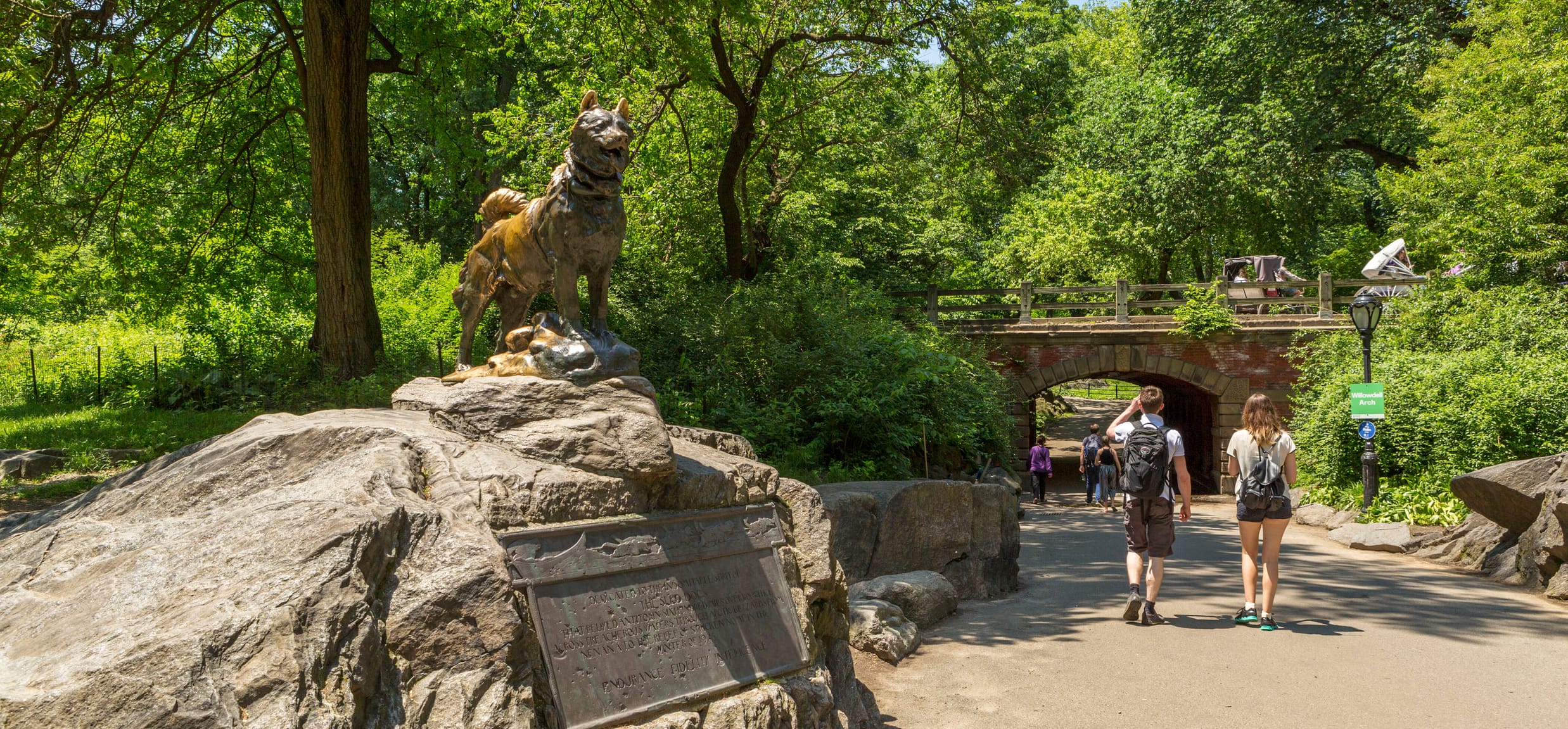Balto Statue

On a rocky outcrop just east of Willowdale Arch stands a memorial to the Siberian husky dog, Balto, one the most beloved monuments in the Park.
Balto became famous after a heroic journey across Alaska. In January 1925, an outbreak of diphtheria threatened the population of the town of Nome, Alaska. Weather conditions prevented the transport of vaccines from Anchorage by plane. A relay of dog-sled teams and mushers provided the only alternative. Twenty teams carried the vaccine almost 700 miles in blizzard conditions, a trip that took remarkably only five days and seven hours. They braved minus 30-degree Fahrenheit temperatures, ice floes, and 5,000-foot mountain peaks.
The rescue operation was chronicled in radio and newspapers. It captured the imagination of people all over the world, with Balto, who led the last relay team through some of the worst conditions of the journey, receiving the most attention. A group of dog-lovers and New Yorkers eager to honor this feat, were successful in raising money and petitioning the City to include a monument to Balto in Central Park. Ten months after completing the trip to Nome, Balto traveled to New York City by plane for the unveiling of the monument on December 17, 1925.
Togo, another sled dog who assisted with the famous Nome rescue mission has a bronze statue in a Seward Park in Lower Manhattan.
The Balto statue's sculptor, Frederick Roth, who went on to become the head sculptor for New York’s Parks Department from 1934 to 1936, is the most represented artist in Central Park. His other works include the Sophie Loeb Fountain in the James Michael Levin Playground, Mother Goose at Rumsey Playfield, and Dancing Goat and Honey Bear at the Zoo.
Balto’s story still captivates children and has inspired books, toys, and a movie. His enduring fame has made the sculpture in Central Park a destination for children who like to climb over its surfaces.
Wondering where the Balto statue is in Central Park so you can visit the famed canine? Balto is located in the east side of Central Park at 67th Street. Read more on our magazine.

Support the Park
The Central Park Conservancy restores, preserves, and maintains historic structures like Balto. Funding for this crucial work comes from donors like you.




